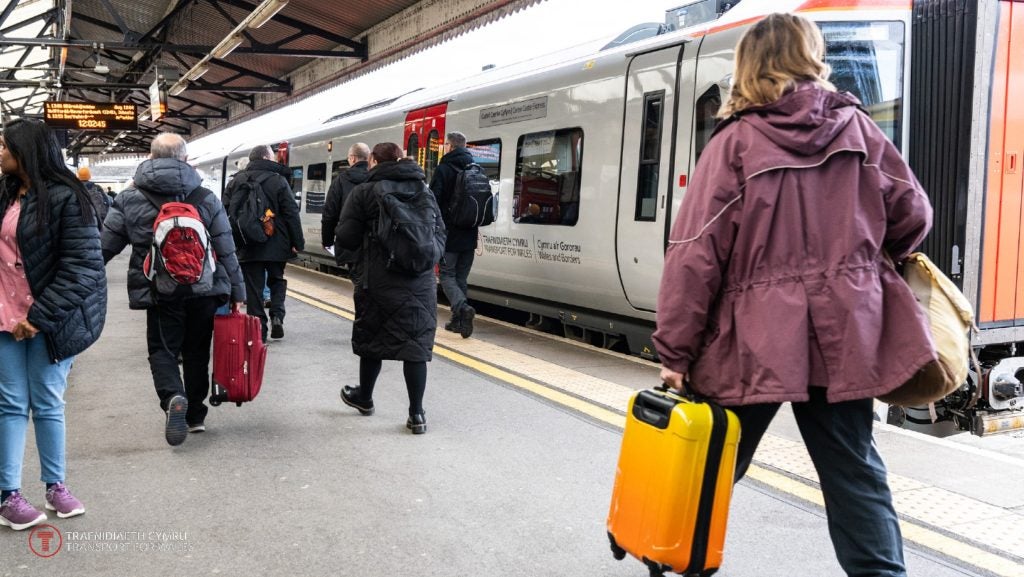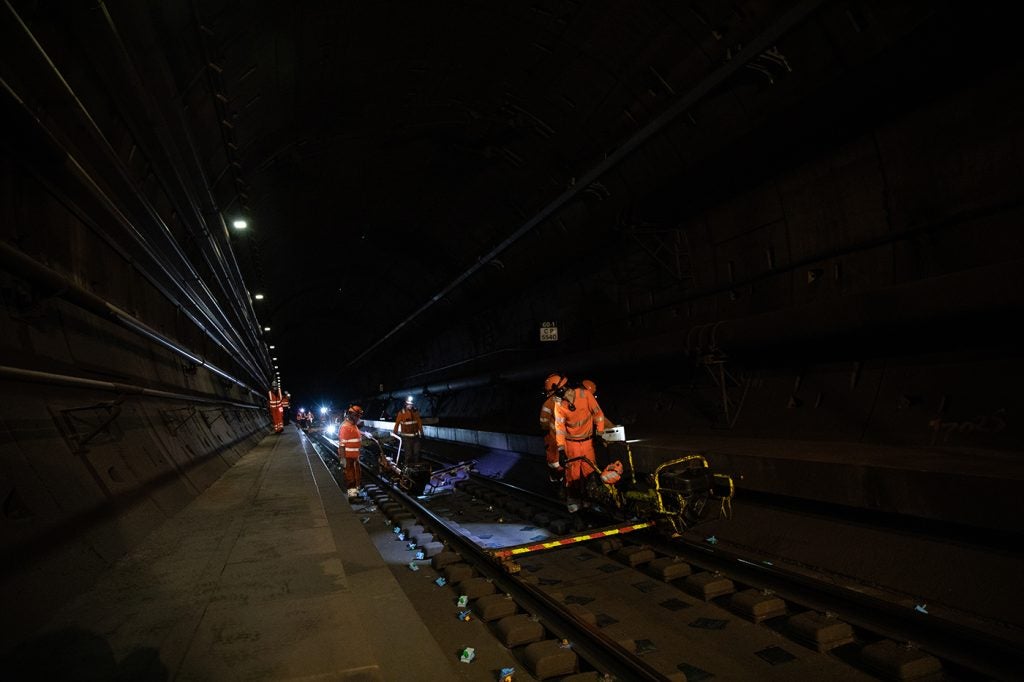
According to the Environmental Defense Fund, the average diesel locomotive in the US emits more than 40t of pollutants a year, affecting health (at a cost of around $23bn a year) and the environment. In what US Transportation Secretary Ray LaHood described as “the new direction”, September 2009 saw rail company Norfolk Southern unveil a prototype 1,500hp switching locomotive – the only all-electric, plug-in locomotive in the world.
When fully charged, its batteries can operate the engine for three shifts, but the Larson Institute at Pennsylvania State University has been working with Norfolk Southern on the development of a longer-lasting battery pack. Throughout the last year, its team, with professor of mechanical engineering Chris Rahn and Larson Institute faculty researcher Chao-Yang Wang (described by Norfolk Southern’s corporate vice-president for R&D, Gerhard Thelen, as “one of the top battery people in the country”) has been testing the different concepts of charging and discharging. Funding will finance a second year, during which models will be analysed in terms of aging. “One of our questions is: ‘how do you make this battery pack last for five years?’. That involves understanding what causes batteries to age and fail,” says Rahn.
Vital transportation research in the US such as this is funded through the university centres programme and coordinated by the Research and Innovative Technology Administration (RITA) for the Department of Transport. It is widely recognised that the programme plays a critical role in advancing US transportation systems. “Behind every major scientific and technological milestone in America’s history, there has been strong, pioneering research by our academic community,” confirms Peter Appel, administrator for RITA.
Cleaner UK and European diesel
Clean tech is also high on the UK’s agenda and in Pew’s aforementioned report The UK’s clean energy investment of $11.2bn put it third in 2009 behind China and the US. Developing and integrating emission-reduction technologies for diesel locomotives and railcars is the focus of research at the University of Newcastle, which is one of the partners for Clean European Rail-Diesel (CleanER-D), a research project that began in 2009. Its €13.4m budget is partly funded by the European Commission.
See Also:
The other 25 partners include the Société Nationale des Chemins de Fer Français (SNCF) in France, the UK’s Association of Train Operating Companies (ATOC) and the University of Rostock in Germany.
How well do you really know your competitors?
Access the most comprehensive Company Profiles on the market, powered by GlobalData. Save hours of research. Gain competitive edge.

Thank you!
Your download email will arrive shortly
Not ready to buy yet? Download a free sample
We are confident about the unique quality of our Company Profiles. However, we want you to make the most beneficial decision for your business, so we offer a free sample that you can download by submitting the below form
By GlobalDataIt is intended that the CleanER-D research project demonstrates the reliability of railway rolling stock powered by diesel engines (compliant with the requirements of the non-road mobile machinery (NRMM) European directive), to enhance their environmental performance and give engine suppliers reason to seriously consider low-emission rail applications. CleanER-D research will run until May 2013.
US hydrogen highway impact
The Pew Charitable Trust’s report entitled “Who’s winning the clean energy race” showed a 230% growth in the clean energy industry since 2005 with a $162bn investment in clean energy worldwide in 2009. Although the US dropped to second position with an annual investment of $18.6bn in 2009 (against China’s $34.6bn), the US Government’s policies make clean tech in transportation research a priority. University input is therefore essential to discovering technologies to meet national and global targets.
The US’s advancement in the emerging hydrogen-for-transport market has seen the Larson Institute work on the commercial cost viability for a stand-alone, comprehensive hydrogen fuelling station with the US Department of Energy (DOE), and Air Products and Chemicals Inc.
The station system is designed to push technologies in the areas of steam reforming, dispensing and hydrogen pressure swing-absorption purification and reports confirm that gasoline-equivalent prices are feasible.
This system is now serving as the basis for supporting new hydrogen energy requirements at the university, such as testing hydrogen-fuelled buses in its role as operator of the Federal Transit Administration’s bus testing programme.
V2V and V2I in the UK and Europe
Newcastle University is also carrying out research into cooperative vehicles and advancement of such technologies are largely reliant upon university research. “Cooperative vehicles are one of the most exciting areas in my opinion,” says Christoph Stiller, IEEE member and coordinator of TCRC Cognitive Automobiles. “The realisation of this technology is still a while off so most of the research into this area is currently taking place at universities.”
Cooperative vehicle technology is the next big challenge for automotive electronics and ITS. Improving transportation efficiency and safety through vehicle to vehicle (V2V) and vehicle to infrastructure (V2I) communication promises to transform our transport systems.
The cooperative vehicle infrastructure system (CVIS), an integrated R&D project co-funded with a budget of over €40m by the European Union under the ICT (Information and Communication Technologies), organised an innovation contest in 2009 to highlight the CVIS concept to the ITS community. The award was won by Sweden’s Halmstad University, which designed an intelligent pedestrian safety system whereby the vehicle informs the intelligent intersection when the driver is assessed as behaving unpredictably. Warnings are sent to the pedestrian and driver through displays in the car, mobile phone or by an alteration of traffic light phases. The application will be demonstrated on test beds all over Europe in Germany, France, Italy, Sweden, the Netherlands and Belgium.
Sustainable systems in South Africa
Where clean tech and transport management systems are high on the transport investment agenda for the US, Britain and Europe, others, such as South Africa ($0.1bn clean tech investment in 2009), are still developing and collaborating with international partners to produce sustainable systems and policies vital for economic and environmental progress.
To enable the implementation of sustainable systems and policies in Africa, the University of York’s Stockholm Environment Institute, along with the European branch of the Institute for Transportation and Development Policy, are leading an international initiative to tackle problems such as congestion, air pollution and road safety through a network called TEST (transport and environment – science technology).
“The aim is to increase capacity of African researchers to provide the evidence base for informed policy decisions on transport and environment, as well as raise the profile of transport and environment issues in each partner country,” says TEST network coordinator Dr Gary Haq. “Road safety, traffic congestion, urban air pollution, road maintenance, accessibility and mobility problems are key challenges in Africa. Transport policies that deliver sustainable cities, healthy citizens, development and poverty eradication are urgently needed.”
African partners include the Universidade Eduardo Mondlane (Mozambique), Ardhi University (Tanzania), Makerere University (Uganda), University of Zimbabwe (Zimbabwe), University of Zambia (Zambia) and the University of Cape Town’s Centre for Transport Studies (South Africa).
The University of Cape Town (UCT) is currently funded in a six-year programme by the Volvo Research and Educational Foundation to identify intelligent transport systems that will improve public transport service levels. Fleet management, navigation systems, electronic ticketing, automatic vehicle identification and real-time information are some of the areas undergoing analysis.
“The largest benefits, with regards to improving the service level of public transport in Cape Town, are expected from public transport prioritisation,” says Roger Behrens, director at UCT’s Centre for Transport Studies. “This can be done, for example, via the adaptation of traffic signals and the provision of special lanes.”
Marianne Vanderschuren, project leader for the university’s ITS projects, is keen to run tests, particularly on public transport so South Africa’s transport information needs can be addressed specifically rather than deploying US and UK-developed systems. “I want to look at how different we are in South Africa compared to the UK and continent, particularly from a language and education level point of view as that question hasn’t been answered,” says Vanderschuren. “The general trend is to copy systems from overseas and I don’t think that’s appropriate here.”
With clean tech and transport management technology impacting both developed and developing countries, into what areas is transport technology heading for the future and what’s the best way to discover effective technologies? “Multimodal safe and partly automated traffic systems are one answer to the needs of future traffic,” says Stiller. “Universities are intensely involved in the research into both these areas. However, for the sake of deployment, more projects including joint university and industrial research are needed.”







